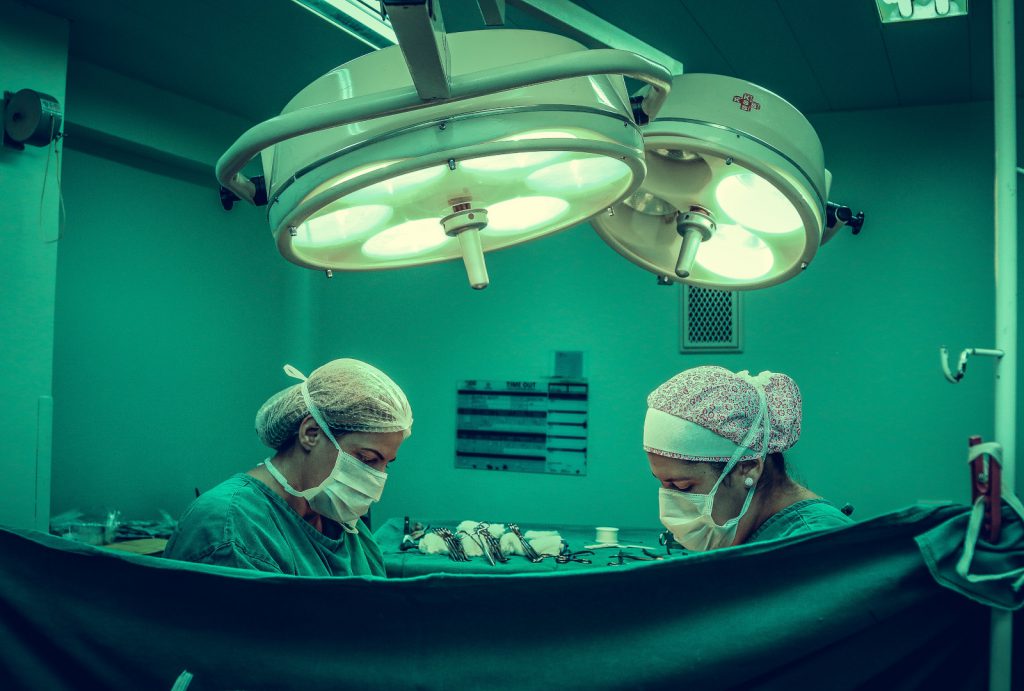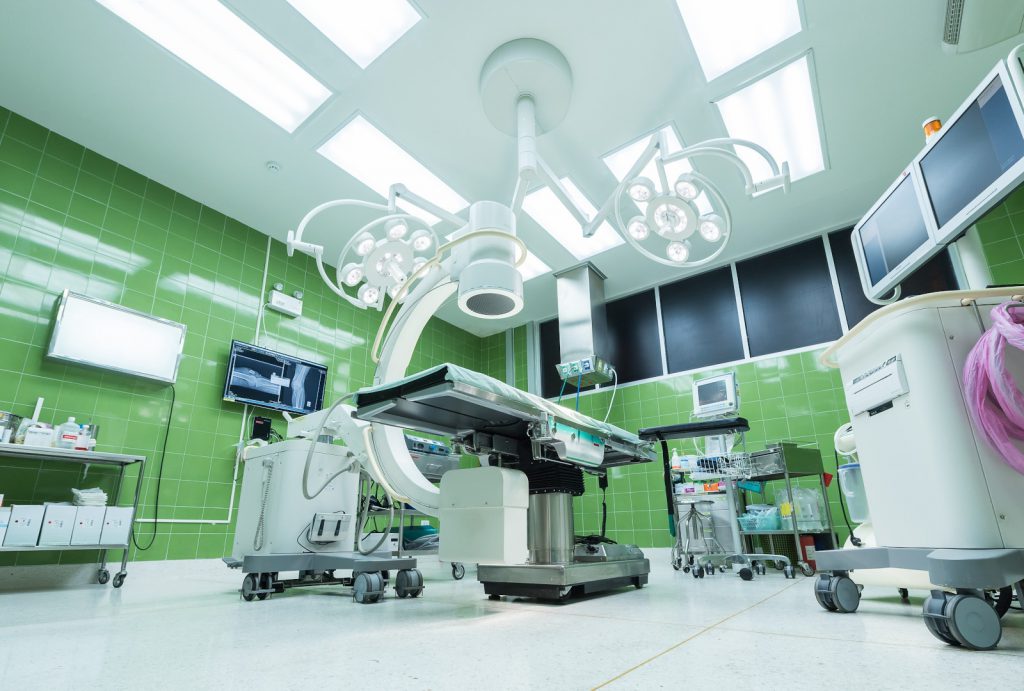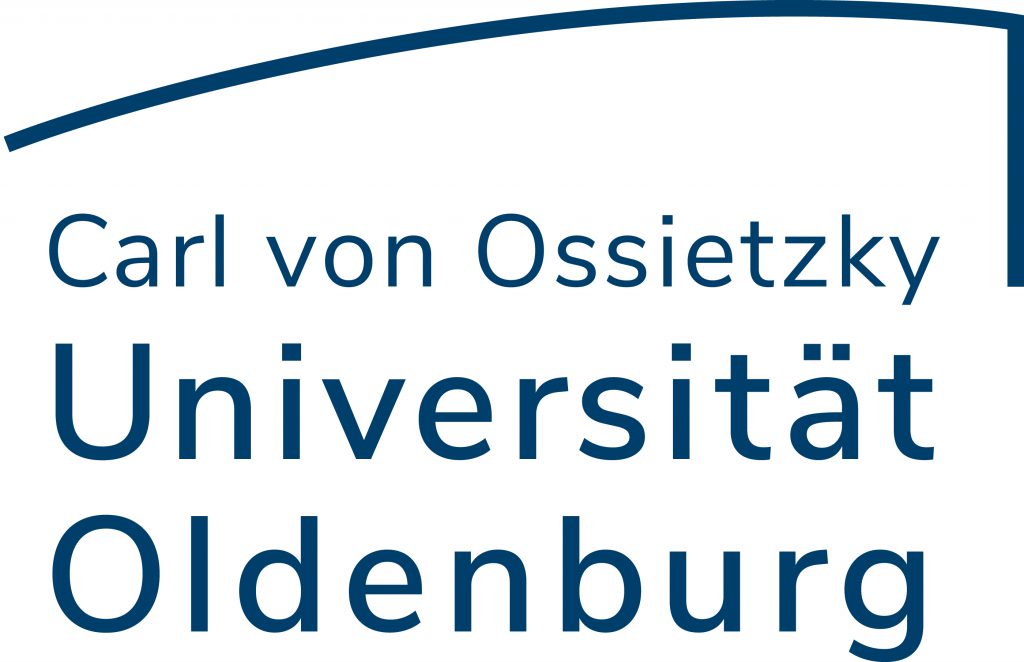Welcome to the Smart Operating Theatre
The “SmartOT” research project is concerned with the development of new, intelligent components for the operating theatre, aimed at reducing the workload of surgical personnel. Various aspects are investigated, the common goal of which is to make the work processes in the operating room more ergonomic and thus more efficient, to reduce the workload of the operating theatre staff and thus ultimately to increase patient safety. The main aspects are smart lighting and smart control. These concepts are interactively and comprehensively linked.
Smart lighting addresses the recurring problem of ensuring the best possible illumination of the surgical field by means of movable surgical lights while maintaining sterility. For this purpose, an automated positioning of surgical lights for the best possible illumination of the surgical site will be researched. Most systems available so far require explicit user interaction. Within the scope of this project, lamp arrays (“luminous OR ceiling”) or conventional OR lights will be modified in such a way that they automatically align in an optimal way. Sensors will register all actors in the operating field and the position of the wound area. Based on this data, the optimal position of the lights is determined, which then adjust their position accordingly. There is already a virtual simulator for the developed algorithms. The implementation and validation in the operating room is the next step, which will be carried out within the scope of this project. Smart control is about maintaining sterility and making workflows more efficient by gesture control of the surgeon. In typical surgeries today, a theatre nurse is assigned to operate certain devices or equipment, often without having deeper medical knowledge or equipment expertise. Control by means of gestures of the surgeon therefore means an enormous reduction in workload for the entire OR personnel. For implementation, infrared or depth cameras will recognize the surgeon’s movements and relevant gestures will be recognized, e.g. as keyboard commands. Preliminary work has already been done successfully for the control system. This preliminary work will now be put into concrete application.
The development of the smart lighting is based on the results of the project Autonomous Surgical Lamps – ASULA of the Visual Computing Group at the University of Bremen. The knowledge and algorithms gained will be further developed in the SmartOT project, so that instead of autonomously controlled surgical lights, permanently installed lighting elements on the ceiling will be controlled to optimally illuminate the surgical field.
The overall project is based on the concept of ambient intelligence. This generates significant synergy between the individual aspects. For example, the lighting is also to be controlled by gestures. Typically today only the alignment of the light and the size of the illuminated field can be operated in a sterile manner. Other functions, such as the adjustment of the colour temperature, are controlled by theatre nurses. There are also already approaches to control the lighting by means of speech recognition. However, due to the high noise level in operating rooms, voice control is less practical than gesture control.



Contact:
Project Coordination
Peter Kohrs
Dr.Mach GmbH &Co. KG
Email: info(at)smart-ot.de
Partners:









